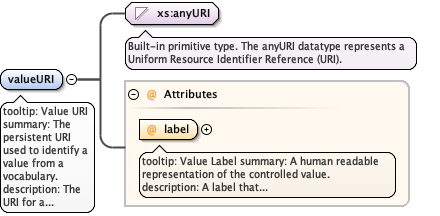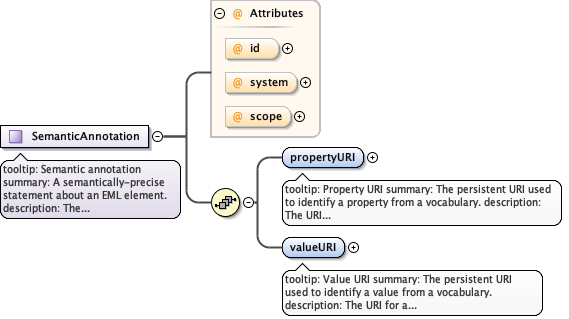tooltip: Semantic Annotation
summary: A precisely-defined semantic statement.
description: An annotation represents a precisely-defined semantic
statement that is used to semantically label another structure
within EML, such as an attribute, entity, or dataset. The annotation
is composed of a subject (implied by the element containing
the annotation or pointed at from within eml:additionalMetadata), a
property that defines the relationship between the
subject and the object of the statement, and the value of that
property. This is equivalent to RDF Statements that consist of a
Subject, Predicate, and Object. More concretely, the annotation
provides a way to state that an element within EML has a specific
property with a specific value.
example: For example, a common annotation would state that a containing
'attribute' uses a measurement unit of 'grams'. This would be equivalent
to defining a statement using the OBOE design pattern that says:
'attribute7' 'oboe:usesStandard' 'oboe:Gram', where 'attribute7' is
shorthand for the attribute in EML containing the annotation, and
'oboe:' is shorthand for the full OBOE URI. In this example,
'attribute7' is the subject represented as the id of the attribute
containing the annotation, 'oboe:standard' is the propertyURI for the
statement, and 'oboe:Gram' is the object of the statement. |



